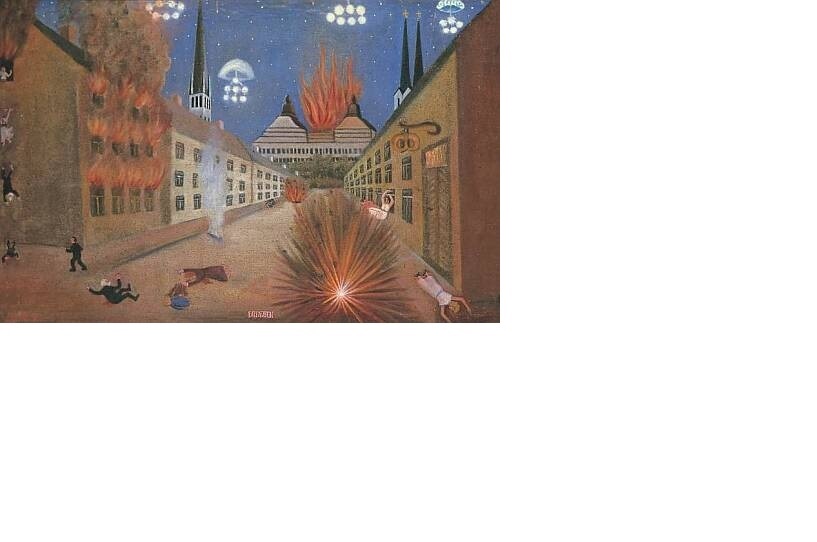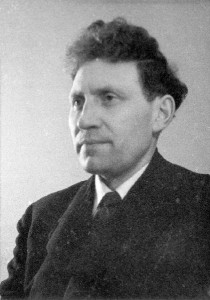The collection belongs to the Museum of Viljandi, and is exhibited in the Kondas Centre. The oldest painting in the collection was created in 1956, the newest in 1981. The collection includes naive paintings by Paul Kondas, some of them addressing Estonian history or socio-critical topics. During Kondas’ lifetime, these paintings were kept in his home. After he died in 1985, the Museum of Viljandi bought them from his relatives. The purchase was initiated by Rein Joost, the former director of the Museum of Viljandi, who knew Kondas personally, and was aware of his wish to keep the collection whole.
The historical paintings reflect on critical topics of the regime: deportations, the bombing of Tallinn, the nature of the Soviet leadership, the human being conquered by the system, the danger of nuclear war. The first time paintings by Kondas were presented in public was in 1960 in Viljandi, in an exhibition dedicated to the 25th anniversary of the Estonian SSR. Two of his mythological paintings and one self-portrait were displayed. The self-portrait caused a lot of excitement, and some people visited the exhibition just to see this particular painting: the jacket, shirt and tie formed the then prohibited blue-black-white combination of the Estonian national flag. Although the presentation of this painting had no consequences, the official reception of Kondas' paintings was still negative: they were called copies of postcards from bourgeois times. The wider public became familiar with Kondas' paintings in 1979, when he was portrayed in the film ‘Pühapäevamaalijad’ (Weekend Painters) by Mark Soosaar. Thanks to Soosaar, Kondas is mentioned in the biographical encyclopedia World Encyclopaedia of Naive Art, published in 1984. In 1983, the first large exhibition of Kondas' paintings took place in Tartu Art Museum, where about 20 paintings were displayed under the heading ‘Väljaspool suurt kunsti’ (Outside Great Art). The first exhibition in his home town of Viljandi took place only in 1988.
Certain circles were already aware of Kondas and his paintings in the 1960s, but greater public interest came in the 1980s. By the second half of the 1980s, after the purchase of paintings by the Museum of Viljandi, there were discussions about the need to present his paintings to the public. However, the Kondas Centre was established only in 2003.
Paul Kondas used to address topics which were prohibited in Soviet times, but his message was hidden, so the general public was not aware of it. He always had another, ‘innocent’ explanation for his paintings. In addition, being very careful, he did not sign his politically most sensitive paintings.
Since he lived in a small town, and to most people after his retirement he was just an eccentric, nobody suspected him of subversiveness, which guaranteed him peaceful conditions for painting.
After 1989/1991, Mari Vallikivi and Tõnu Kukk researched the person and the work of Paul Kondas. They collected memories about him, conducted interviews, collected correspondence, and worked in archives. The collected material is in their possession and is still not organised. Mari Vallikivi considers Kondas important to Estonian cultural history and to world cultural history. Naive artists do not usually deal with political topics, which makes Kondas a unique person in art history. Additionally, his work and his person are important when researching the resistance, as without the memories and letters it would not have been possible to decode the hidden messages in his works.
Most paintings in the collection are displayed in the permanent exhibition of the Kondas Centre. Active research is not currently being carried out.


